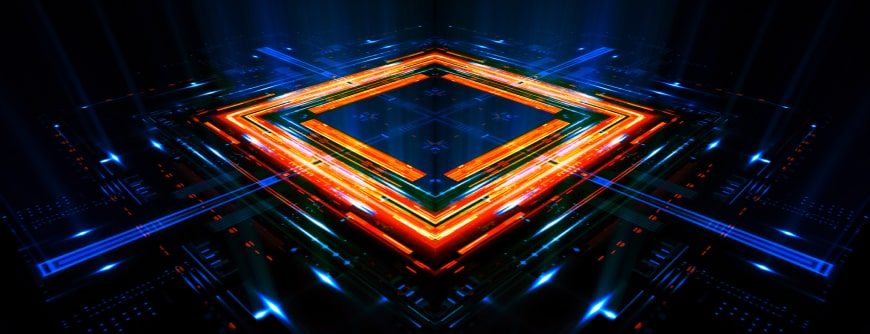O termo "supercomputador" se refere a um computador que opera com um nível mais alto de desempenho do que um computador padrão. Muitas vezes, isso significa que a arquitetura, os recursos e os componentes dos supercomputadores os tornam extremamente poderosos, dando a eles a capacidade de ter desempenho na taxa operacional mais alta possível para computadores ou próximo a ela.
Os supercomputadores contêm a maioria dos principais componentes de um computador típico, incluindo pelo menos uma processadora, um dispositivo periférico, um conector, um Operating System e vários aplicativos. A principal diferença entre um supercomputador e um computador padrão é seu poder de processamento.
Tradicionalmente, os supercomputadores eram máquinas únicas e super-rápidas usadas principalmente por empresas e organizações científicas que precisavam de grande capacidade computacional para computações de alta velocidade. Os supercomputadores atuais, no entanto, podem consistir em dezenas de milhares de processadores que podem realizar bilhões, até mesmo trilhões, de cálculos por segundo.
Hoje em dia, os aplicativos comuns para supercomputadores incluem previsão do tempo, controle de operações para reatores nucleares e criptologia. Como o custo da supercomputação diminuiu, os supercomputadores modernos também estão sendo usados para pesquisa de mercado, jogos online e aplicativos de realidade virtual e aumentada.
Uma breve história do supercomputador
Em 1964, Seymour Cray e sua equipe de engenheiros da Control Data Corporation (CDC) criaram o CDC 6600, o primeiro supercomputador. Na época, o CDC 6600 era 10 vezes mais rápido do que os computadores regulares e três vezes mais rápido do que o próximo computador mais rápido, o IBM 7030 Stretch, realizando cálculos em velocidades de até 3 mega operações de ponto flutuante por segundo (FLOPS). Embora isso seja lento de acordo com os padrões atuais, na época, era rápido o suficiente para ser chamado de supercomputador.
Conhecido como o “pai da supercomputação”, Seymour Cray e sua equipe lideraram o setor de supercomputação, lançando o CDC 7600 em 1969 (160 megaFLOPS), o Cray X-MP em 1982 (800 megaFLOPS) e o Cray 2 em 1985 (1,9 gigaFLOPS).
Posteriormente, outras empresas buscaram tornar os supercomputadores mais acessíveis e desenvolveram processamento paralelo massivo (MPP, massively parallel processing). Em 1992, Don Becker e Thomas Sterling, empreiteiros da NASA, construíram o Beowulf, um supercomputador feito de um cluster de unidades de computador que trabalham juntas. Foi o primeiro supercomputador a usar o modelo de cluster.
Os supercomputadores atuais usam unidades de processamento central (CPUs, Central Processing Units) e unidades de processamento gráfico (GPUs, Graphics Processing Units) que trabalham juntas para realizar cálculos. A TOP500 lista o supercomputador Fugaku, com sede em Kobe, Japão, no RIKEN Center for Computational Science, como o supercomputador mais rápido do mundo, com uma velocidade de processamento de 442 petaFLOPS.
Supercomputadores x PCs regulares
Os supercomputadores de hoje agregam poder de computação para oferecer desempenho significativamente maior do que um único desktop ou servidor para resolver problemas complexos em engenharia, ciência e negócios.
Diferentemente dos computadores pessoais regulares, os supercomputadores modernos são compostos por clusters enormes de servidores, com uma ou mais CPUs agrupadas em calcular nós de computação. Os nós de computação compõem um processador (ou um grupo de processadores) e um bloco de memória e podem conter dezenas de milhares de nós. Esses nós se interconectam para se comunicar e trabalham juntos para concluir tarefas específicas enquanto os processos são distribuídos entre milhares de processadores ou executados simultaneamente.
Como o desempenho dos supercomputadores é medido
FLOPS são usados para medir o desempenho de um supercomputador e para cálculos científicos que usam cálculos de pontos flutuantes, ou seja, números tão grandes que precisam ser expressos em expoentes.
Os FLOPS são uma medida mais precisa do que um milhão de instruções por segundo (MIPS). Conforme observado acima, alguns dos supercomputadores mais rápidos de hoje podem ter desempenho em mais de cem FLOPS de quadrilhões (petaFLOPS).



